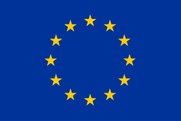The Nordic Energy Efficient Mortgage (NEEM) Hub
Helping Nordic consumers look after their economy and the environment through increasing the energy efficiency of their homes.
About the NEEM Hub
The aim of the Nordic Energy Efficient Mortgages (NEEM) Hub is to scale up lending to energy renovations in the Nordics to meet the EU green deal, as well as ambitious national climate targets.
The EU green deal proposes a ‘renovation wave’ of the EU’s public and private building stock and requires Nordic governments to commit to ambitious climate targets and massive private investment. Over the next decade, we estimate that investments of up to EUR 50 bn are needed in the Nordics to be sure of reaching the current targets.
However, a substantial amount of the necessary investment, though profitable on paper, is not being carried out. This issue, which has come to be labelled the “energy efficiency gap”, is well-publicised and has been described in numerous research papers and articles. However, through their touchpoint with end customers and ability to finance the investments, financial institutions are in a perfect position to carry out solutions to diminishing the energy efficiency gap.
The NEEM Hub adopts a bank-centric approach in breaking down the identified barriers to develop a concrete, core solution ready for implementation in the banking sector throughout the Nordics. Nordea, Swedbank, and the green fintech start-up, Hemma, have acted as market demonstrators, testing the developed solutions with a coherent value chain to enable a smooth customer journey.
In the video below we have outlined the core solution. Further down on this page are also listed the five barriers to energy renovations and our proposed solutions.
If you have any questions about the NEEM Hub and our core solution feel free to reach out to us using the contact form or the details at the bottom of this page.
The hub is comprised of a long list of institutions from the financial sector, behavioural scientists, mortgage specialists and authorities, and digital technology communities from across the Nordics, all guided by Copenhagen Economics. The project is a part of the existing Energy Efficient Mortgages Initiative and is supported by Horizon 2020.
In the summer of 2023, we will publish blueprint reports to demonstrate the feasibility of replicating and scaling up the initiative and to enable financial institutions to provide energy-efficient mortgage loans to their customers.
About the NEEM Hub
A brief summary of the Nordic Energy Efficient Mortgage Hub highlighting the main aims of the Hub and the barriers that have to be overcome.
The focus of the NEEM HUB
BEHAVIOURAL BARRIERS
TRANSACTION
COSTS
LACK OF FINANCE-READY DATA
FINANCIAL BARRIERS
REGULATORY BARRIERS
BARRIERS
Including limited information and high perceived complexity,
leads to profitable renovations not being undertaken.
Can amount to up to 40% of
the total costs when undertaking renovations.
Causes a fundamental problem in the entire value chain of energy renovations.
Such as potential risk mitigating factors of green mortgages not being fully exploited.
Need to be addressed to ensure that the newly adopted taxonomy is fit for lending to energy renovation projects in the Nordics.
SOLUTIONS
Prioritise consumer guidance by providing targeted information with the right timing to nudge the customer in the right direction.
Reduce transaction costs by facilitating cooperation between different stakeholders to reduce the number of contact points for customers.
Increase the level of data by utilising a new type of data, e.g., weather data, combined with existing databases and allow digitalised automated verification process of the renovation.
Ensure appropriate risk management and capital issuance by focusing on proper risk management in a Nordic perspective based on the ongoing work in EeMMIP.
Guide policymakers based at a national and European level to ensure coherency to the taxonomy and national energy classification systems.
The NEEM Hub core solution involves three steps
Estimating EPC labels without any consumer input
We can estimate actual energy efficiency performance based on hourly energy consumption and weather data such as wind sunshine and outside temperature (to remove behavioural elements) and estimate wind tightness and insulation power.
Estimating energy renovation costs and savings for different levels of energy labels for the specific building
We calculate the capital costs of energy renovation between each energy performance certificate. We also calculate yearly savings on the energy bill between each energy performance certificate.
Finding optimal energy label and give concrete recommendations for renovation.
The model runs through all possible renovation scenarios to find the EPC label renovation that maximises net savings. The optimum energy label is defined as the energy label, that results in marginal savings on energy bills being equal to marginal capital costs of energy renovation. We also provide estimates of annual CO2 reductions and an increase in house value for the renovation recommendation.
To ensure maximum efficiency, potential candidates for energy renovations are screened before being offered energy renovation recommendations. This involves using public data housing characteristics to do an initial screening of the “predicted energy label” before reaching out to candidates. If the initial screening shows promise, a data-gathering process is initiated to retrieve weather data and detailed energy consumption data from potential candidates.
In our pilot projects, we have found around 50% of households to be net better off by conducting energy renovations. Typically, we recommend renovating up to label C (not aligned with the taxonomy). Taking a conservation approach, however, we only recommend energy renovations for approximately 10% of households where energy renovations would be the most profitable.
To see a run-through of the core solution including examples of the modelling approach and the recommended communication with customers, click here [button to “Core solution”-section].
The NEEM Hub promotes energy renovations through Nordic financial institutions
Financial institutions are in a perfect position to overcome barriers to energy renovations through their touchpoint with end customers and ability to finance the investments.
The NEEM Hub will therefore adopt a bank-centric approach in breaking down the identified barriers to develop concrete solutions ready for implementation in the Nordic banking sector.
Lead by Copenhagen Economics, the financial institutions of Nordea, Swedbank, and the green fintech start-up, Hemma, will act as market demonstrators, testing the developed solutions.


